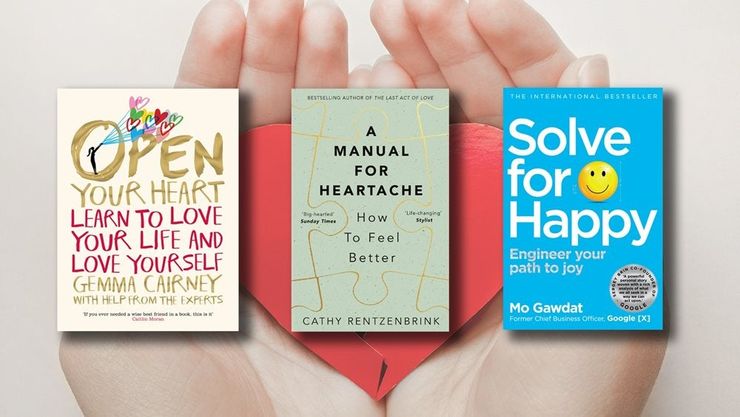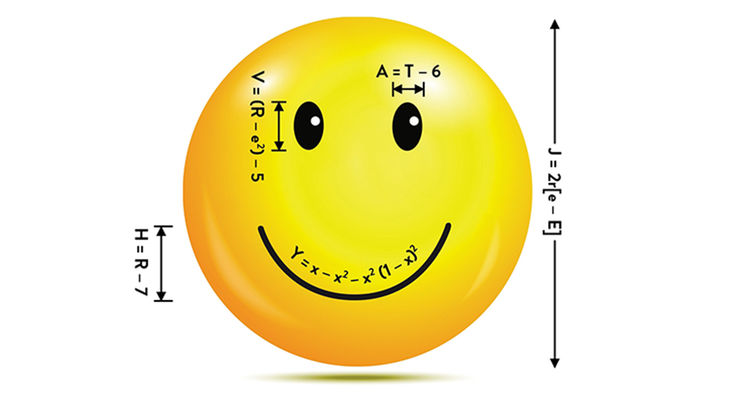How to heal a broken heart
A broken heart can feel like it will never heal, but this sage advice on how to get over a breakup will help you move on from the heartache.

Is your heart aching, or breaking over losing someone you love? Ali Roff Farrar compiles some of the wisest pieces of advice from the best books to turn to for heartache, to help you get over a breakup and mend your broken heart . . .
Remember heartbreak cannot sink your boat
‘It's been rocked, but it can't sink it' says Gemma Cairney in her lovingly written Open Your Heart: Learn to Love Your Life and Love Yourself. ‘MILLIONS of people have had their hearts broken' she writes, ‘It's a completely normal part of life, and an important part too . . . Heartbreak means you are ALIVE. You feel things.'
In her book, which is aimed at a slightly younger audience, she reminds us that while heartbreak can feel overwhelming, it's also important to realise what it can't do. It can't stop you from being brilliant; ‘from being clever and funny and creative, or good at maths. You are bright like a spark – if not brighter now.' It can't always be understood by others, ‘Sometimes our mates and family members just won't understand how we feel. Don't expect everyone to always get it' says Cairney. And ultimately, it can't ‘stop the world from spinning on its axis. Even though it feels like the world doesn't look the same during heartbreak, it is still there, waiting for you.'
Buy Open Your Heart: Learn to Love Your Life and Love Yourself
Allow yourself to let go of that which does not belong to you
In her book The Path Made Clear, Oprah asks five-time New York Times bestselling author Caroline Myss what she would say to people who are in despair. She answers, ‘I would tell them, you had your life focused on something that didn't belong to you, and a path that didn't belong to you . . . Someone that didn't belong to you.' It sounds blunt, but Myss continues to explain that it's in holding onto those things, often through fear, that we betray ourselves. ‘You didn't let go of a yesterday that didn't belong to you. You hung onto a rage that didn't belong to you and you wouldn't let it go'. Her advice is, if we can let go of the things that aren't for us, we can break free from the hurt we are ultimately placing upon ourselves.
Balance your triggers with talismans
Cathy Rentzenbrink lost her brother Matty in a car accident when she was just seventeen and he was just sixteen. Needless to say, overwhelming grief followed. But in her uplifting book A Manual for Heartache, she shares sage advice on how to pick yourself up after loss. She talks of triggers for sadness or anxiety, social media being one for her, ‘I don't fully understand why social media plays with my head so much, but I don't need to. I only need to know that when it makes me feel aggressive and judgemental I should put it down.' But she also shares that we can create positive triggers for happiness too, ‘I call these talismans, which means an object with magical properties', with one example being her flowery wellies; ‘they can be anything that reminds us of something good'.
Be with your heartache
Mo Gawdat, author of Solve For Happy draws on mindfulness techniques to help deal with those persistent thoughts that we find impossible to let go; the ‘I'm so sad' thoughts, the ‘I'll never be able to put myself back together' and the ‘I have nothing' thoughts. But when our heads fill with these thoughts, they can often feel so painful that we try to push them away. Mindfulness asks us instead to observe our thoughts and let them go, but as Gawdat says, ‘No one's able to let go of every thought'. There's a revolutionary trick we can use however, to help us cope with this vicious cycle that causes us to feel so bad. ‘This is your chance to learn to observe the drama', says Gawdat. ‘Start by acknowledging how you feel, the emotion triggered by the thought. Don't resist it. Let it be . . . Ask yourself why you became angry or agitated. Which thought led you here?' By identifying the thought, we occupy the problem-solving part of the brain that so desperately wants to fix our situation, and allow it to understand the thought that triggered us to feel this way. ‘When you clearly observe it, you'll realize that it's often not accurate, and certainly isn't worth the price you're paying to keep it simmering' shares Gawdat, plus, ‘The simple act of trying to trace the emotion to the thought that caused it gives you the breather you need in order to cool down.'


